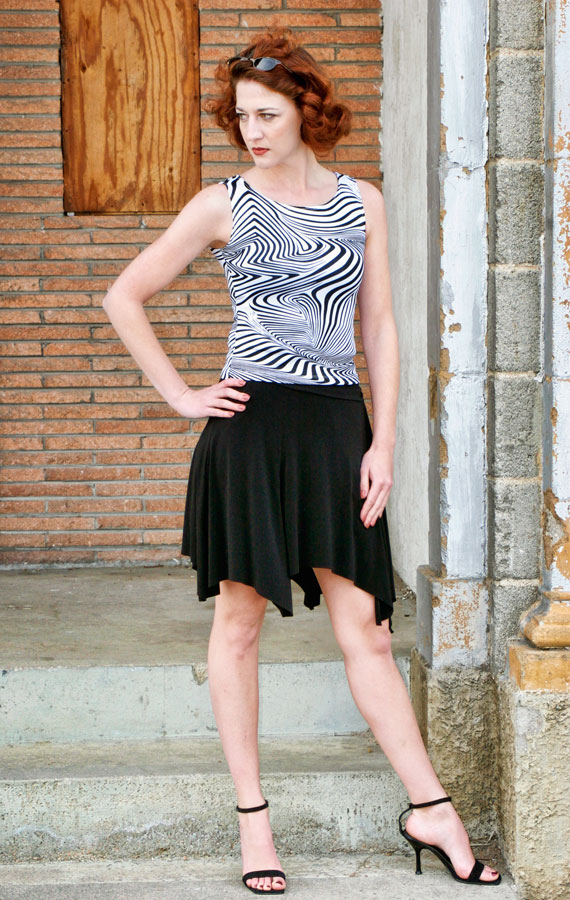My #thursdaythoughts theme has been retired for 2025. In it’s place is something new—Anything Can Happen Day. This was what Thursdays were called on the Mickey Mouse Club where I stole the idea!
Today’s Post by Joe Farace
Let me start by answering a question that may have just popped into your head: Yes, you can shoot portraits in infrared—if you’re ready to deal with unconventional results. Some people are not. When I submitted an article to a print magazine aimed at professional photographers that included this image, the editor refused to run it, considering it to be “creepy.” That would not, however, be a word that I would use to describe Ms. Stoneman.

How I Made this Shot: The color infrared image of my former muse, Tia Stoneman was originally captured with a Canon EOS 30D that was converted for IR capture with their Standard 720nm filter by a company that’s no longer in business. The lens used was an EF 85mm f/1.8. To maximize depth-of-field, the Aperture Priority mode exposure was 1/200 sec at f/16 and ISO 400. To produce the image that you see here, I did some burning and dodging to the JPEG file (made before my current RAW+JPEG regimen) in Photoshop before applying Color Efex’s Bi-Color Filter. Next, I tweaked it with one of the Cinema filters in Exposure Software’s Exposure to punch up the color. Then the Glamour Glow filter from Color Efex Pro was applied for the final touch.
Some Basic Laws of Imaging
When it come to image sharpness, only one part of a three-dimensional object can be in focus at the image plane. Some of the areas in front of or behind that plane of focus will, more or less. appear to be in focus. That’s because at the point of critical focus, there is a range of acceptable focus that is one-third in front of that point and two-thirds behind it.
 Back in the manual focus days, almost all lenses had depth of field scales engraved on them so you knew what to expect. These days it’s rare to find lenses like this but it happens every now and then. You can, for example, see it on lenses from Voigtlander and some others.
Back in the manual focus days, almost all lenses had depth of field scales engraved on them so you knew what to expect. These days it’s rare to find lenses like this but it happens every now and then. You can, for example, see it on lenses from Voigtlander and some others.
If any this is new to you, Here’s a few points to keep in mind: Depth-of-field increases as the lens aperture is stopped down (larger numbered apertures.) Be wary of stopping down too much because of lens diffraction. This occurs when light passes through a small aperture when both the wavelength of light and the opening itself are roughly the same size. Diffraction is most noticeable with lenses that have shorter (than normal) focal lengths. You can avoid diffraction by determining a particular lens’s “sweet spot,” as described in this post. Based on my experience, this seems to be especially critical when shooting infrared images.
Back to the topic at hand: Conversely, depth of field decreases as the lens aperture gets larger (smaller f/ numbers.) Sometimes called depth-of-focus, it’s also affected by the camera’s distance to a subject. Closer distances equates to shallower depth of field and that amount increases as the camera-to-subject distance increases.
How I Made This Photograph: What do those colors Tia is wearing (and her hair) in the above photograph really look like under normal light? The image at right was shot about 15-feet to the left of the wall seen in the top photograph. It was made within a few minutes of when the infrared shot was made and was captured using a Canon EOS 50D and EF 28-105mm lens (at 53mm) with an exposure of 1/250 sec at f/11 and ISO 800.
 Life Pixel does a great job with IR conversions and they have done all the conversions for my Canon DSLRs as well as Panasonic Lumix G-series cameras. This is not a paid or sponsored endorsement, just my experience.
Life Pixel does a great job with IR conversions and they have done all the conversions for my Canon DSLRs as well as Panasonic Lumix G-series cameras. This is not a paid or sponsored endorsement, just my experience.
Used copies of my book, The Complete Guide to Digital Infrared Photography are available used from Amazon for $31.18 as I write this. My book Creative Digital Monochrome Effects has a chapter on IR photography and is available new from Amazon for $19. with used copies starting around seven bucks